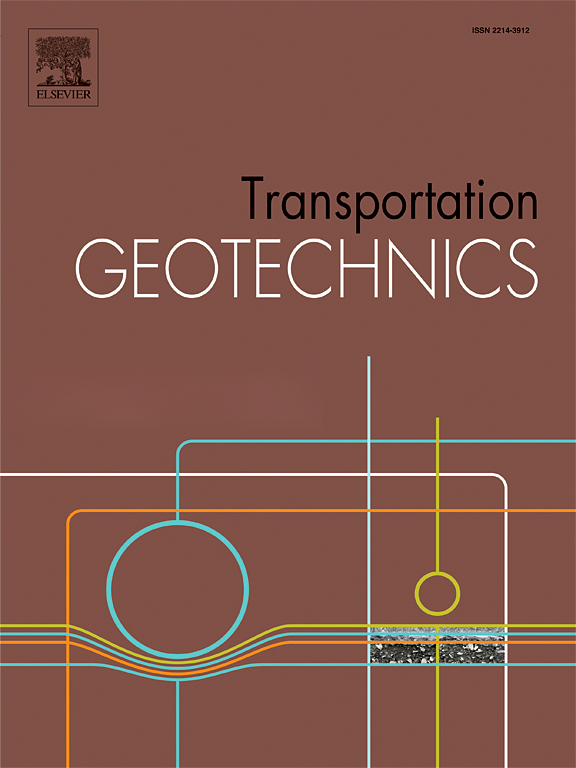Study on deformation characteristics and damage mechanisms of soil-red stratum soft rock mixture undergoing tunnel excavation unloading considering wetting
IF 4.9
2区 工程技术
Q1 ENGINEERING, CIVIL
引用次数: 0
Abstract
Red stratum is widely distributed in Southwest China, and a large number of deep soil-red stratum soft rock mixed backfill areas were formed when the site was leveled by “high excavation and low filling” during the construction of mountain city in this area. Tunnels under construction inevitably go through backfill, which makes tunnel excavation under deep soil-rock mixture backfill become a common condition. Meanwhile, rainfall is frequent and concentrated in Southwest China, and the resulting wet disintegration of red stratum soft rock has a significant impact on the deformation and bearing characteristics of soil-rock mixture. As a result, it was decided in the present study to conduct a shear-unloading test on the soil-red stratum soft rock mixture, augmented by discrete element numerical simulations, to reveal the influence of wetting. This all-encompassing strategy seeks to examine the laws governing the deformation and progression of damage of the mixture, offering valuable insights into its response when subjected to unloading conditions. The findings indicate that the soil-red stratum soft rock mixture prior to and after wetting shows obvious strain hardening characteristics during the shear process. The residual strength after unloading has a linear correlation with unloading amplitude. The soil-red stratum soft rock mixture prior to wetting is loaded by the rock block bearing skeleton, and the rock block breakage is primarily caused by shear, while jointly loaded by soil and rock block in saturated sample, with the rock block breakage caused by wetting. After the unloading process, the dry sample’s bearing capacity no longer increases and eventually overall failure occurs. Conversely, the saturated sample’s bearing capacity can continue to increase and ultimately layered failure from the top to the bottom occurs. The unloading rate mainly affects the growth rate of load-bearing capacity after unloading of saturated samples.
求助全文
约1分钟内获得全文
求助全文
来源期刊

Transportation Geotechnics
Social Sciences-Transportation
CiteScore
8.10
自引率
11.30%
发文量
194
审稿时长
51 days
期刊介绍:
Transportation Geotechnics is a journal dedicated to publishing high-quality, theoretical, and applied papers that cover all facets of geotechnics for transportation infrastructure such as roads, highways, railways, underground railways, airfields, and waterways. The journal places a special emphasis on case studies that present original work relevant to the sustainable construction of transportation infrastructure. The scope of topics it addresses includes the geotechnical properties of geomaterials for sustainable and rational design and construction, the behavior of compacted and stabilized geomaterials, the use of geosynthetics and reinforcement in constructed layers and interlayers, ground improvement and slope stability for transportation infrastructures, compaction technology and management, maintenance technology, the impact of climate, embankments for highways and high-speed trains, transition zones, dredging, underwater geotechnics for infrastructure purposes, and the modeling of multi-layered structures and supporting ground under dynamic and repeated loads.
 求助内容:
求助内容: 应助结果提醒方式:
应助结果提醒方式:


